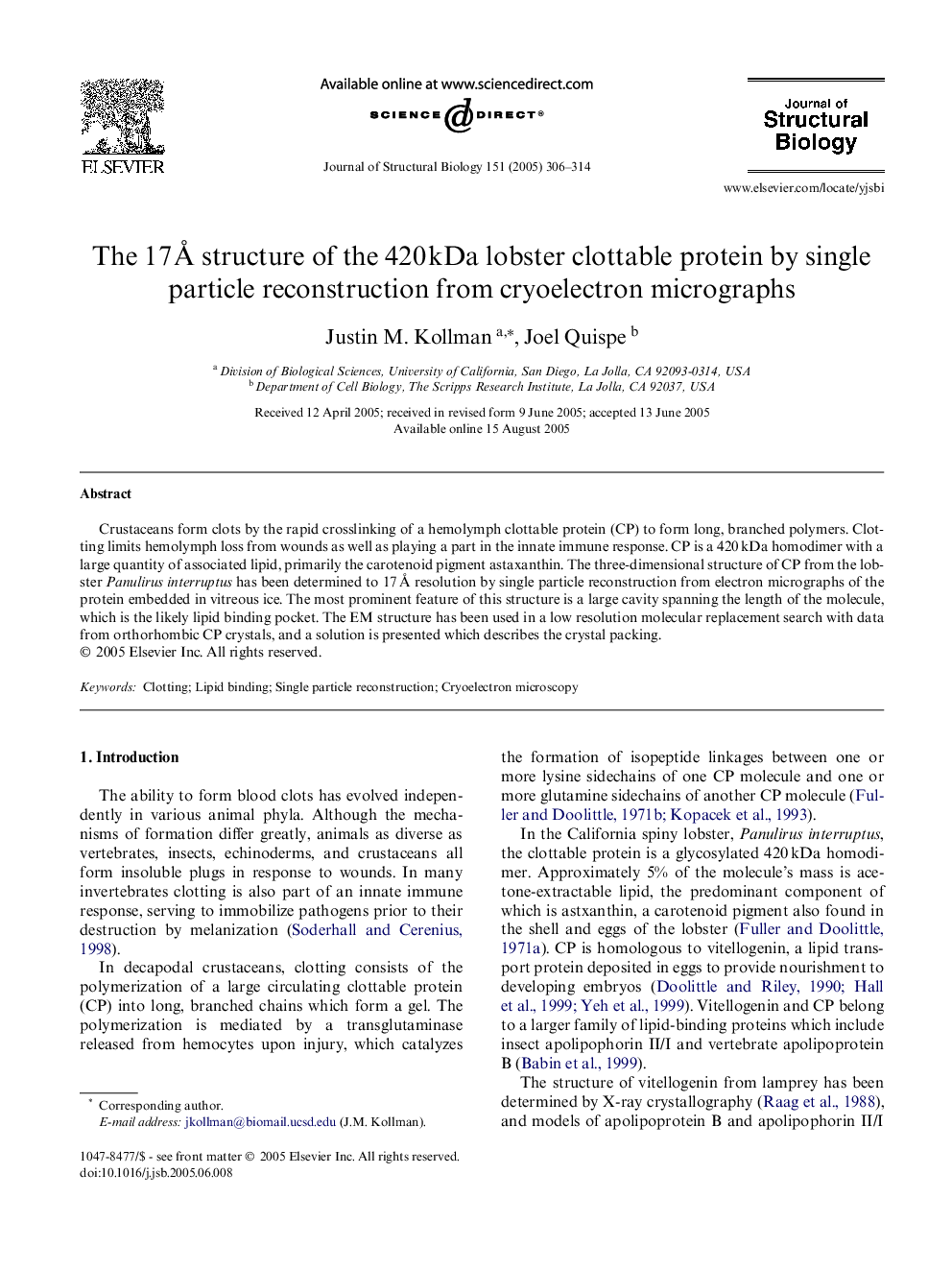| Article ID | Journal | Published Year | Pages | File Type |
|---|---|---|---|---|
| 9138968 | Journal of Structural Biology | 2005 | 9 Pages |
Abstract
Crustaceans form clots by the rapid crosslinking of a hemolymph clottable protein (CP) to form long, branched polymers. Clotting limits hemolymph loss from wounds as well as playing a part in the innate immune response. CP is a 420Â kDa homodimer with a large quantity of associated lipid, primarily the carotenoid pigment astaxanthin. The three-dimensional structure of CP from the lobster Panulirus interruptus has been determined to 17Â Ã
resolution by single particle reconstruction from electron micrographs of the protein embedded in vitreous ice. The most prominent feature of this structure is a large cavity spanning the length of the molecule, which is the likely lipid binding pocket. The EM structure has been used in a low resolution molecular replacement search with data from orthorhombic CP crystals, and a solution is presented which describes the crystal packing.
Related Topics
Life Sciences
Biochemistry, Genetics and Molecular Biology
Molecular Biology
Authors
Justin M. Kollman, Joel Quispe,
